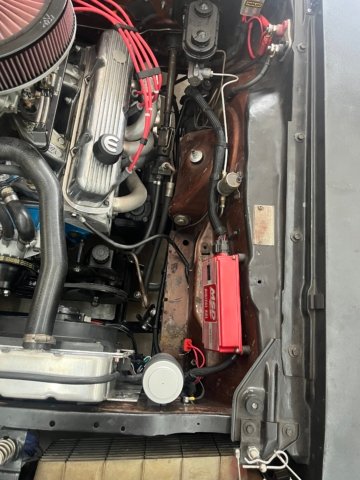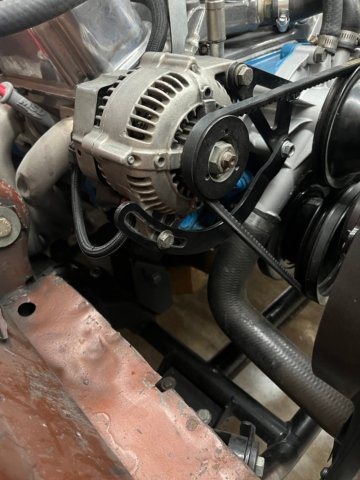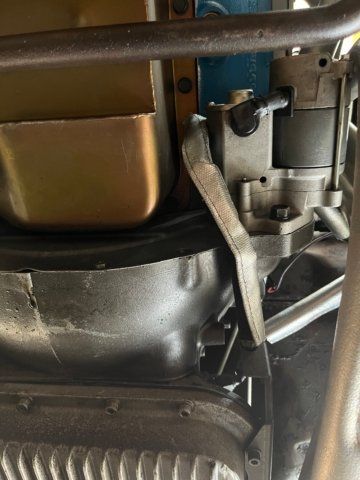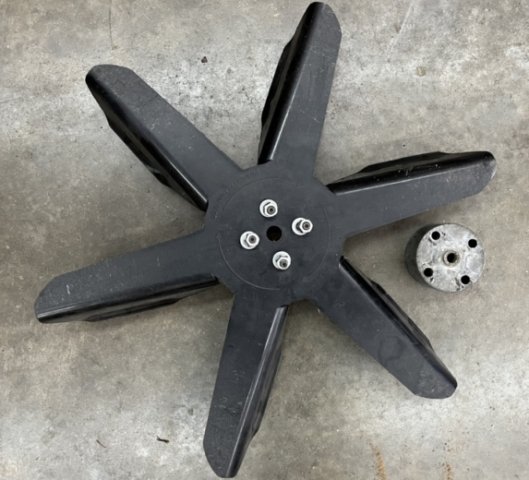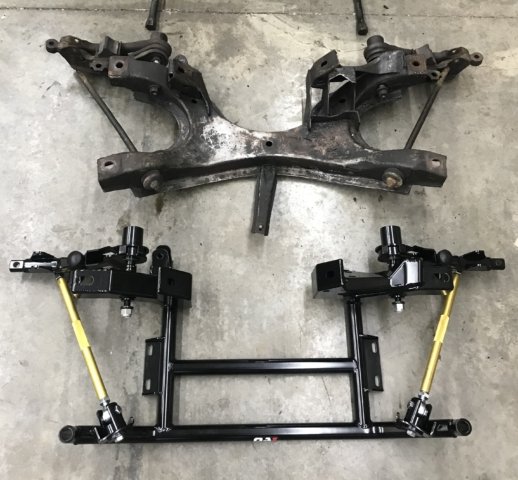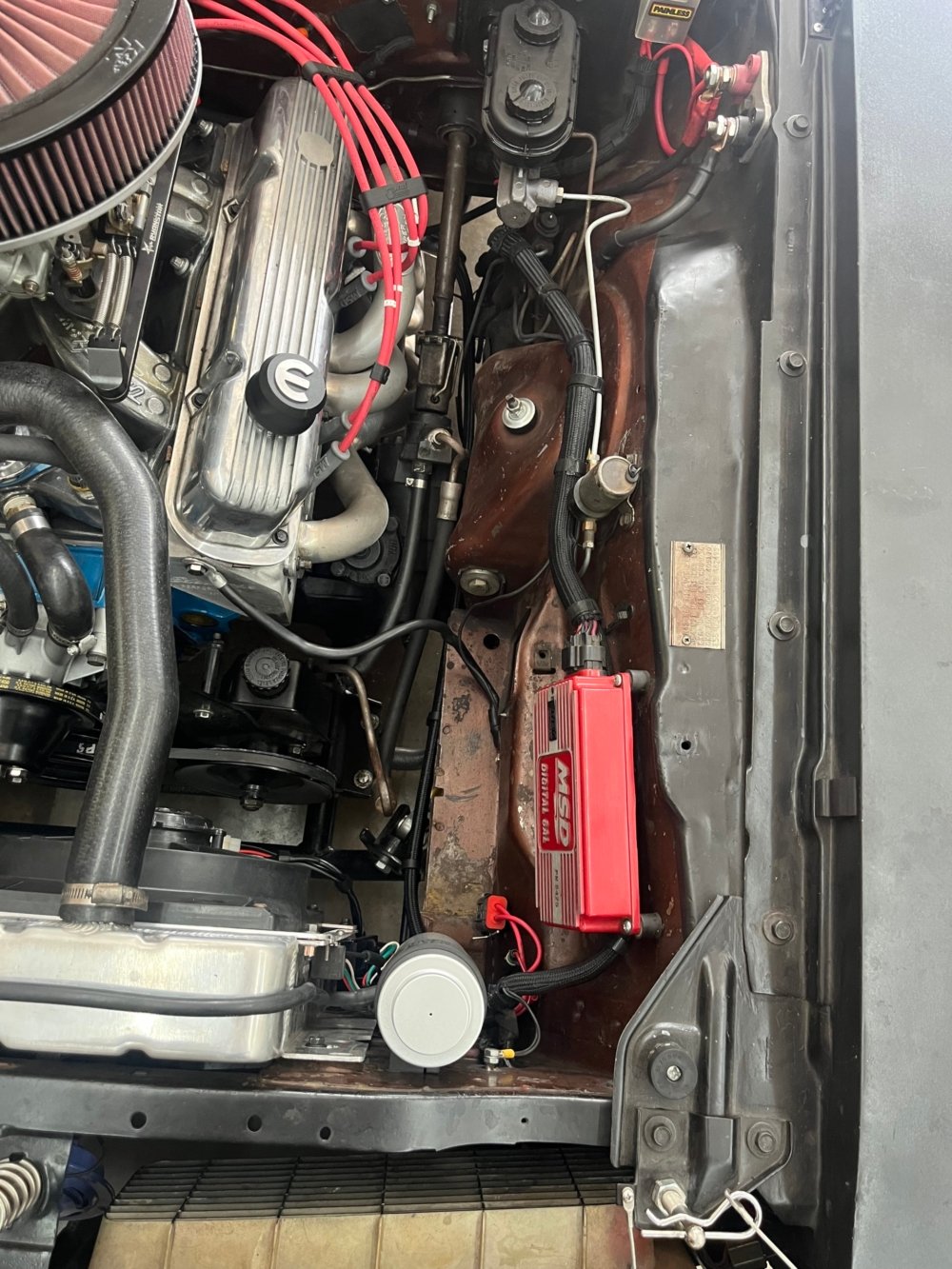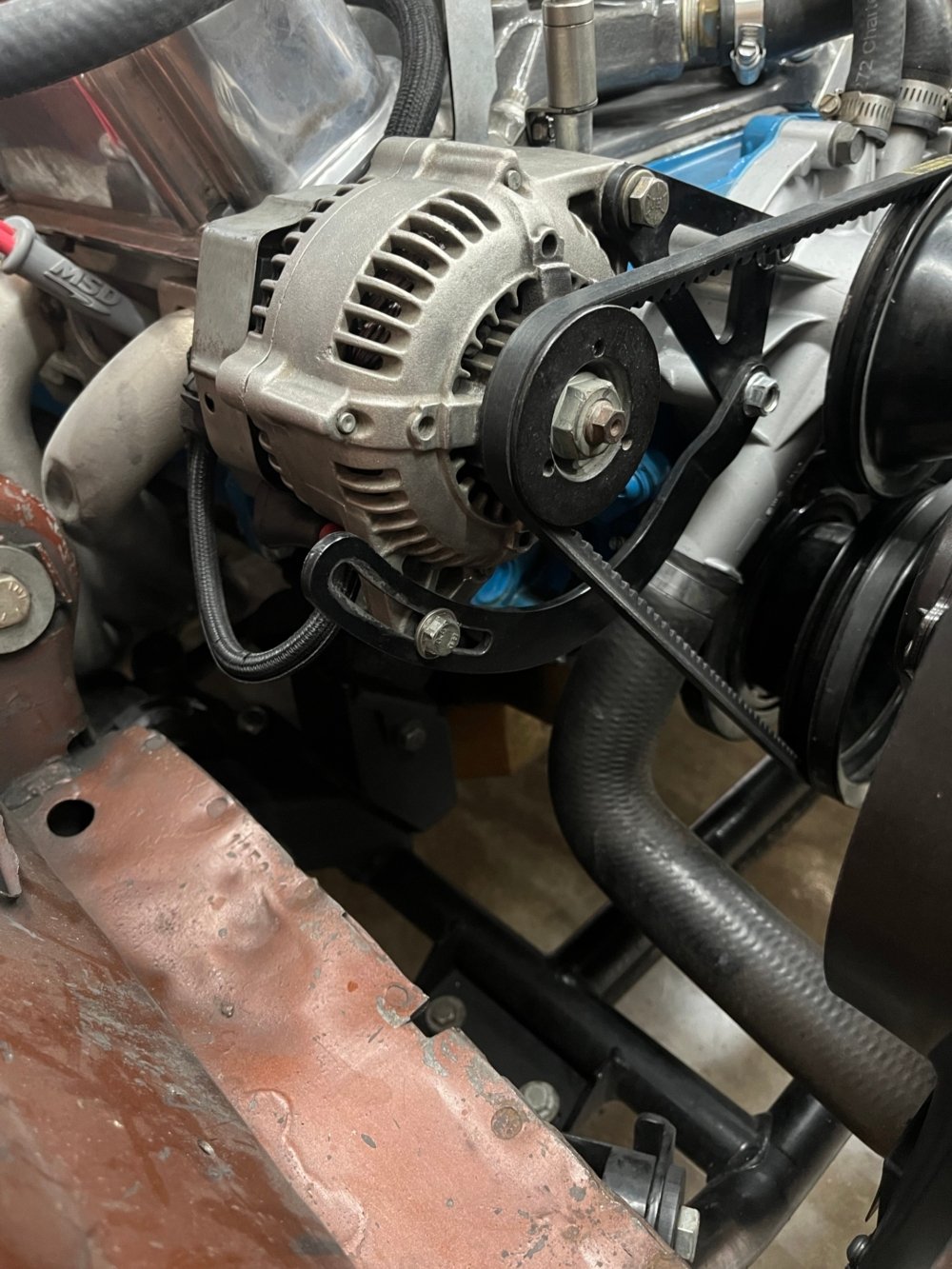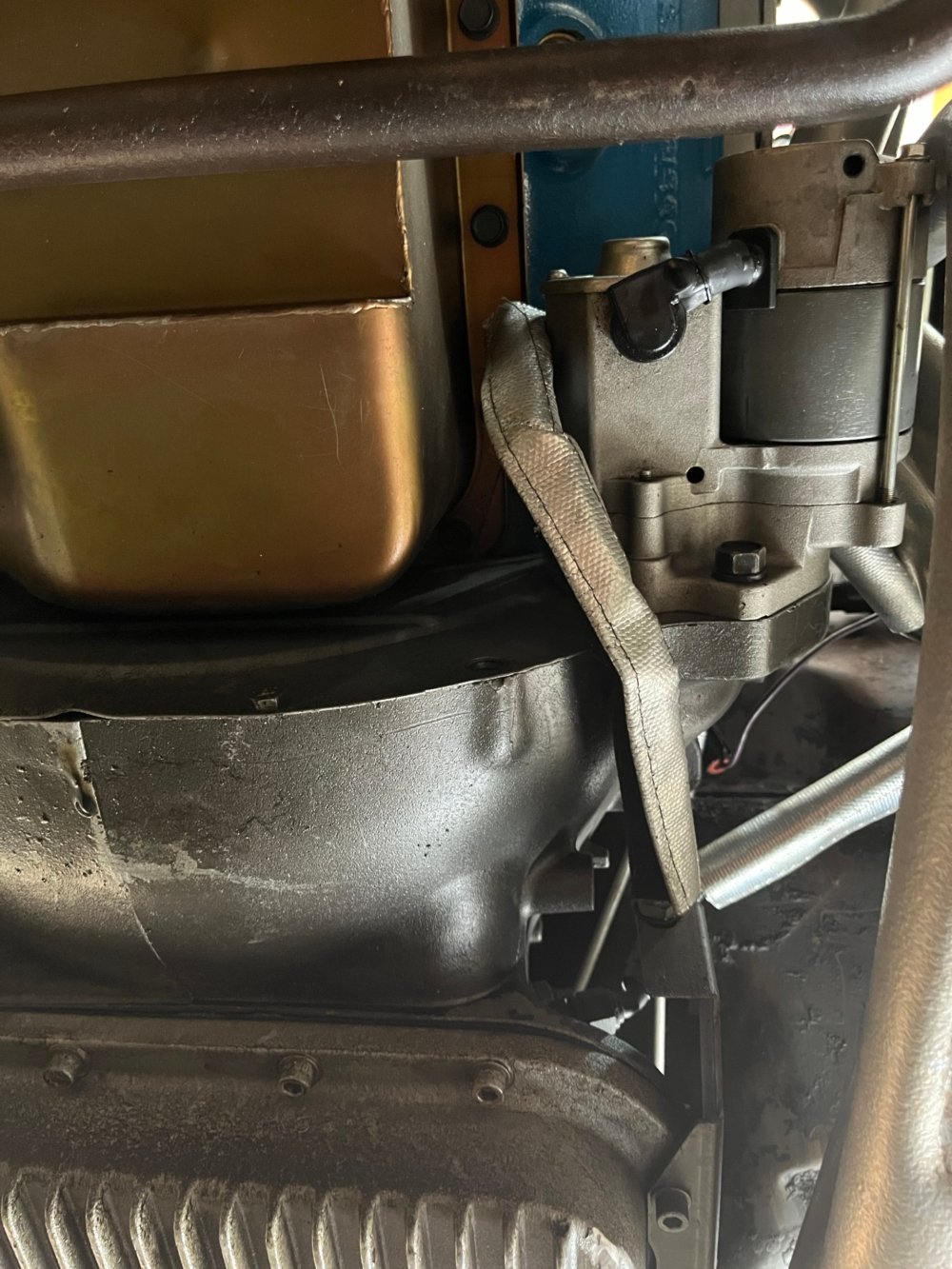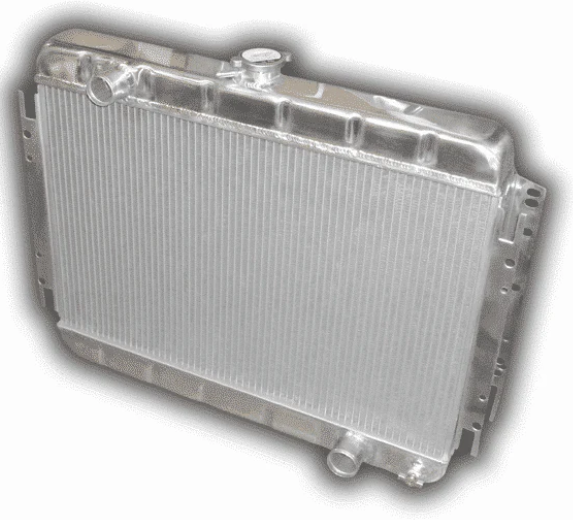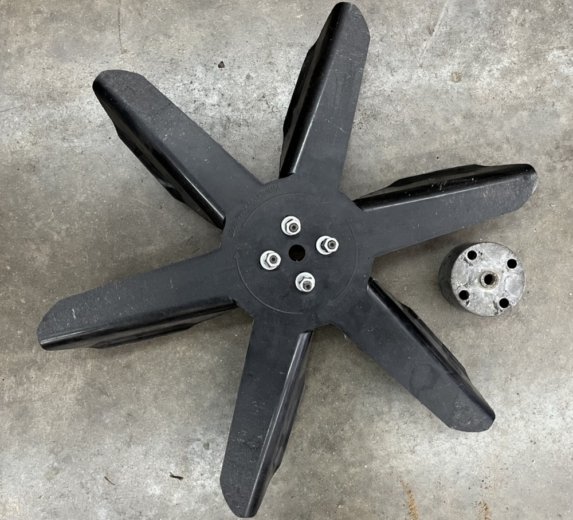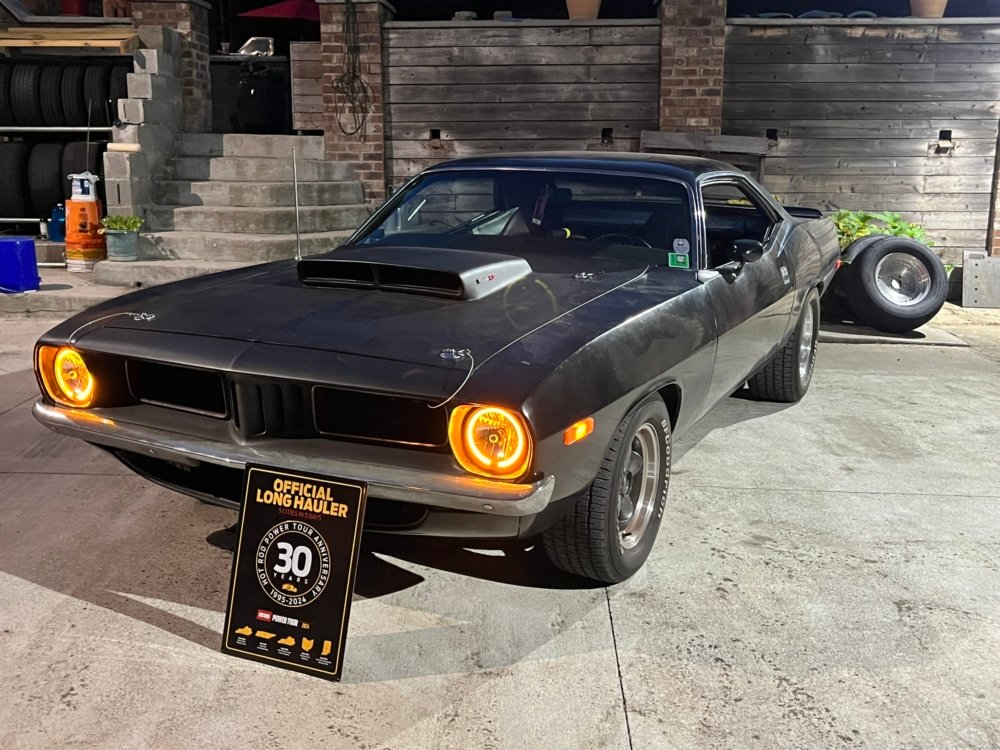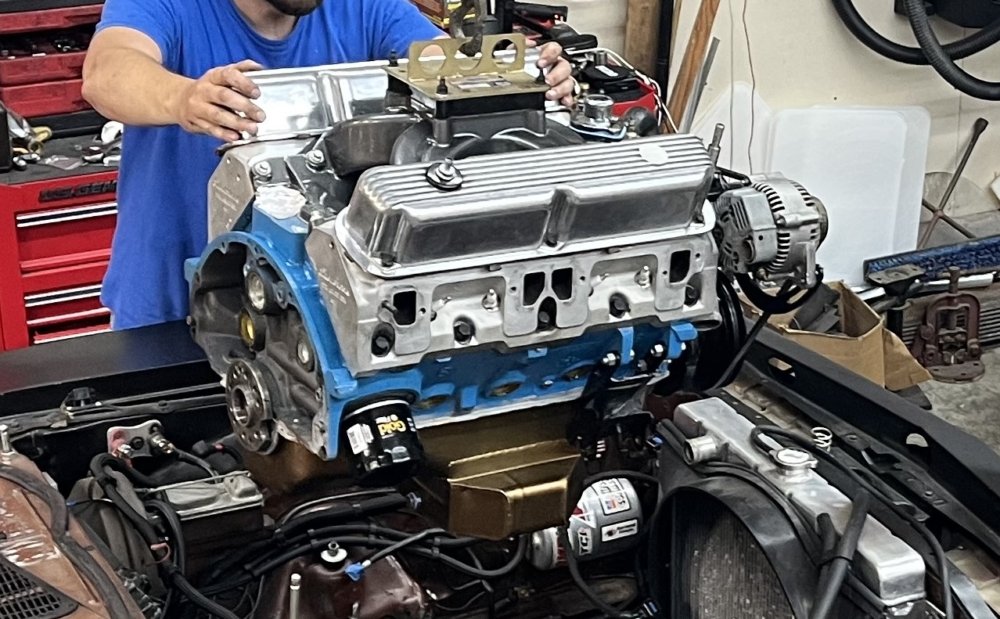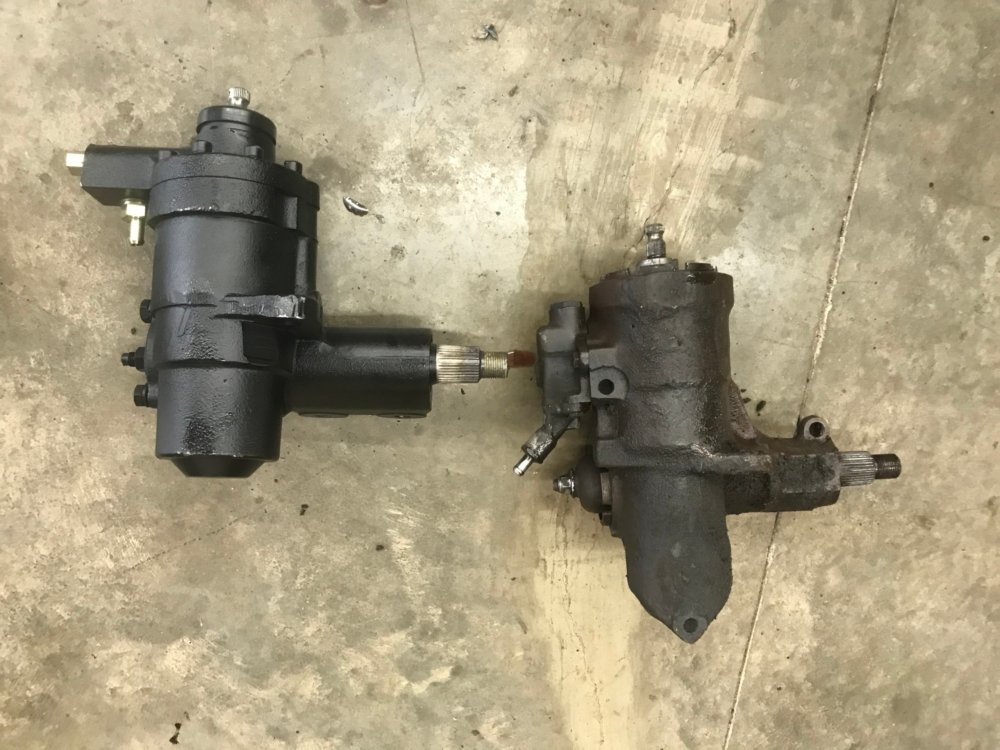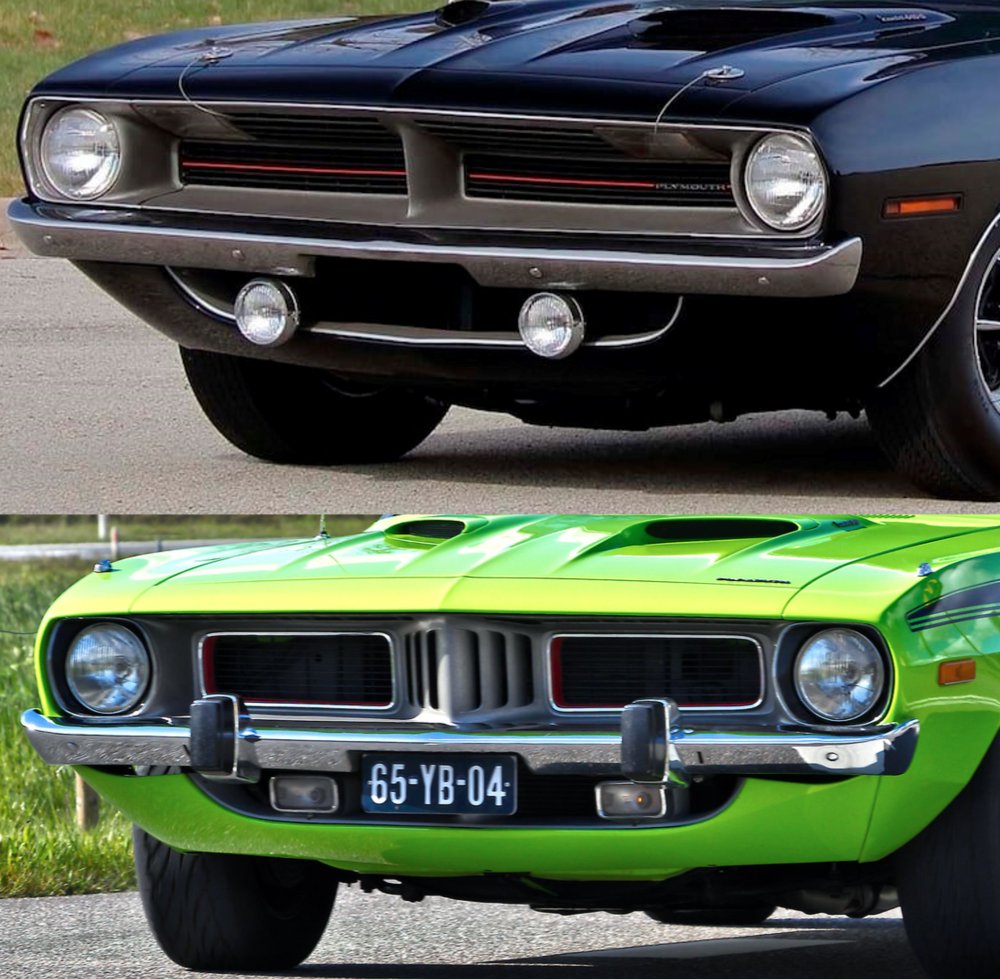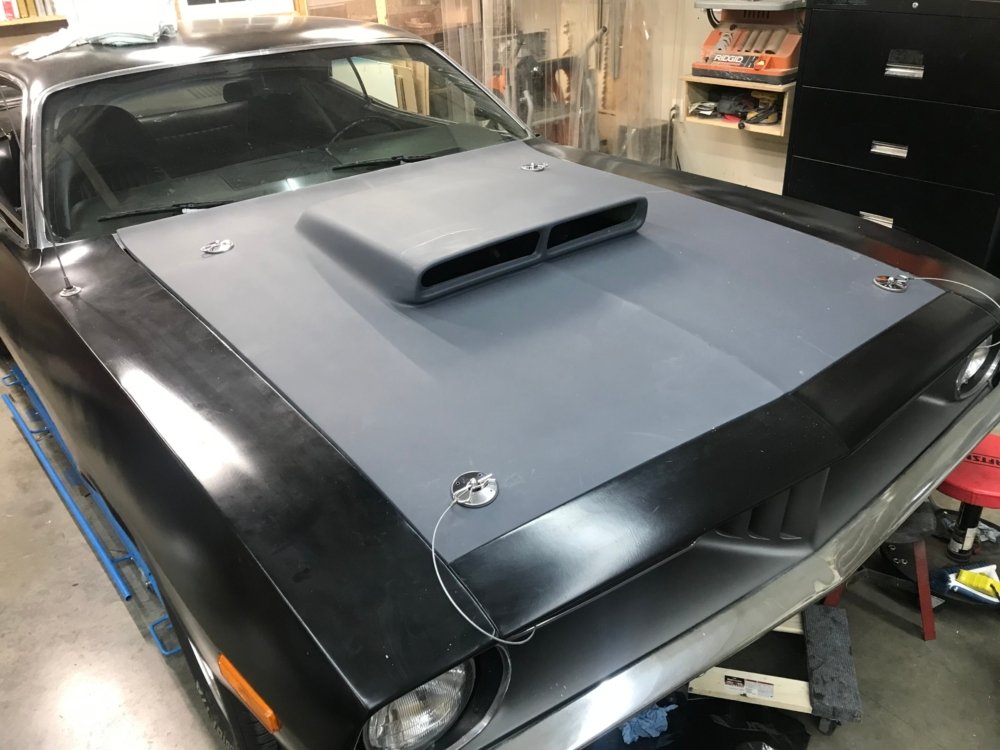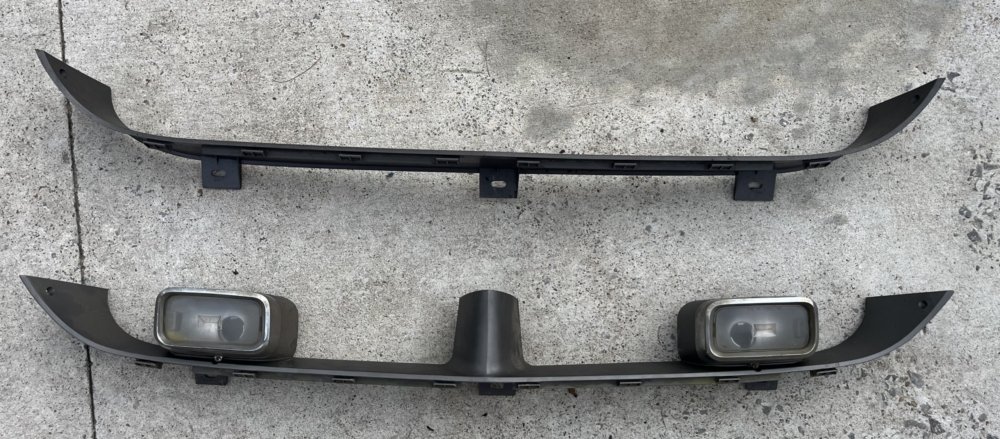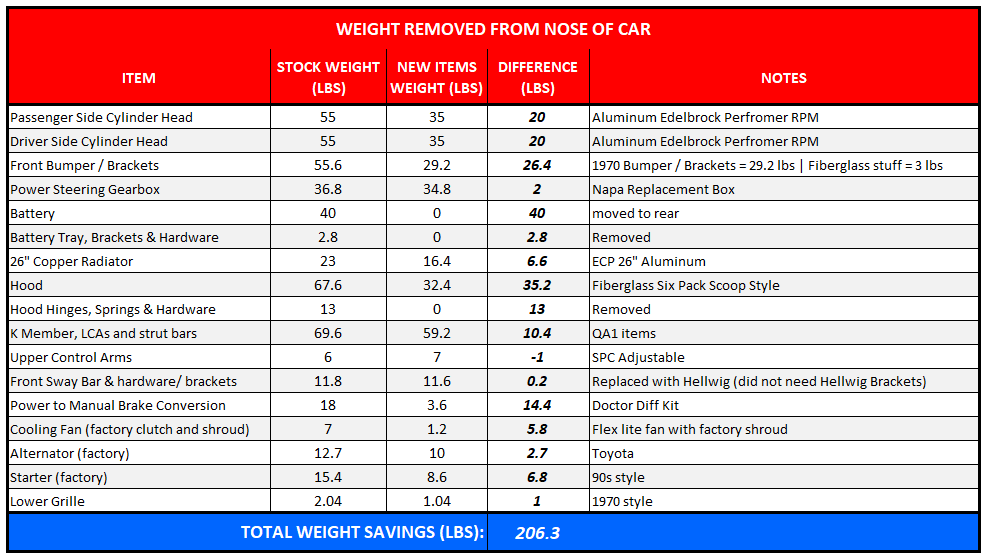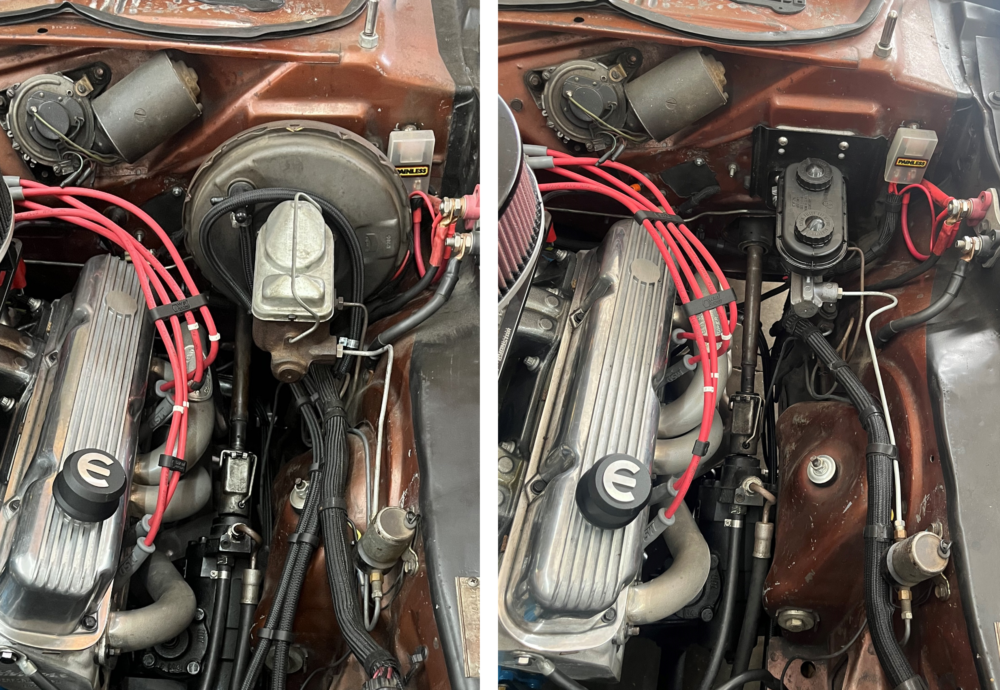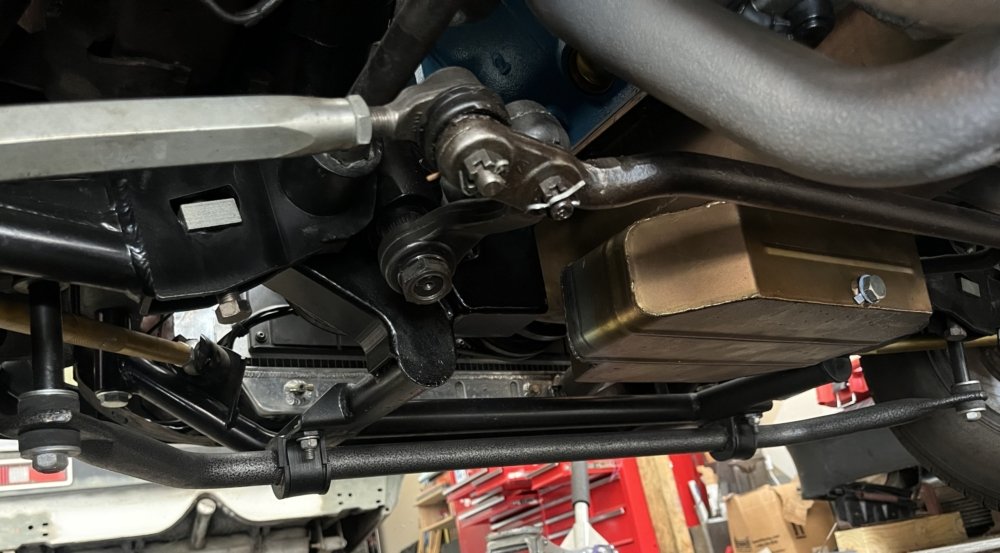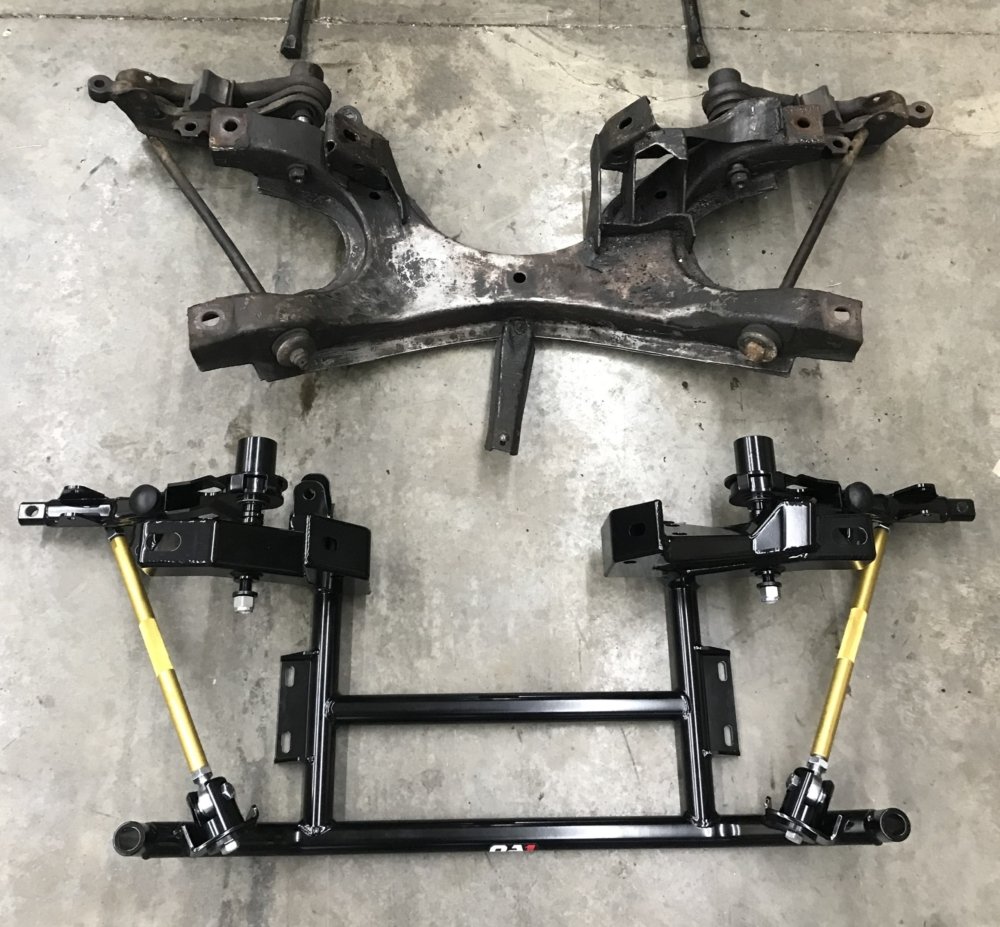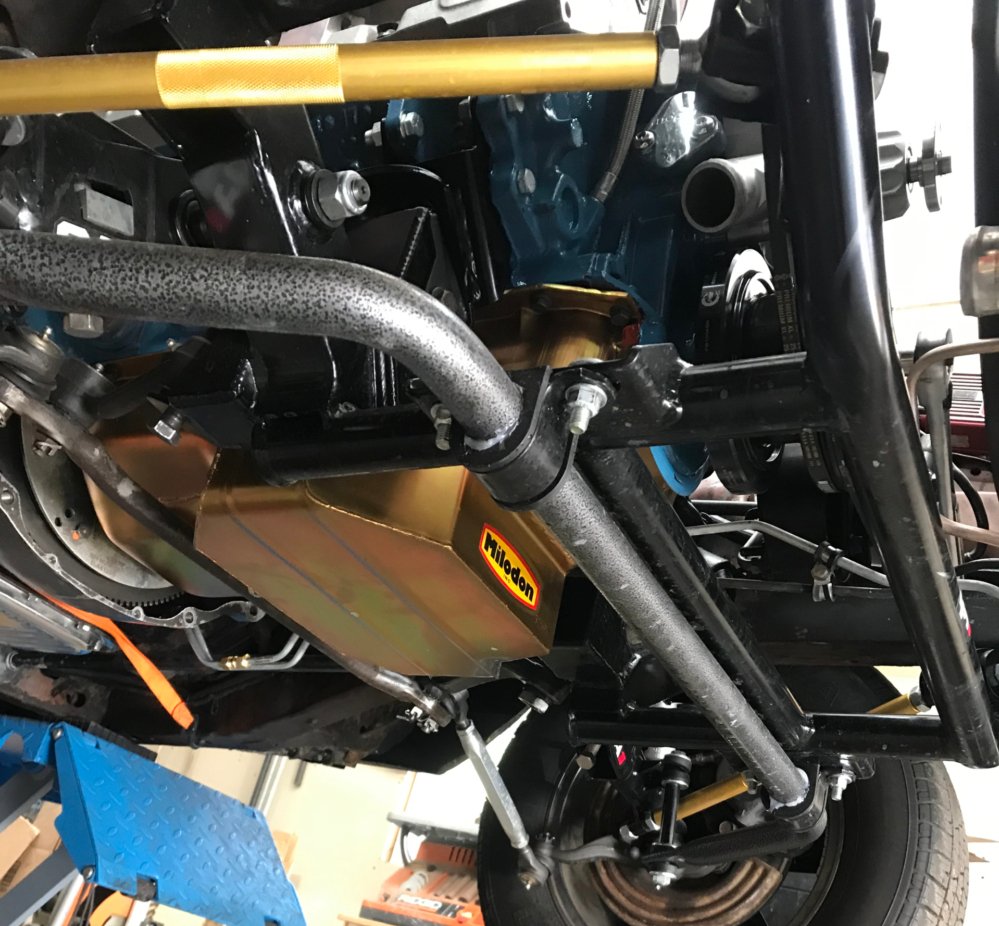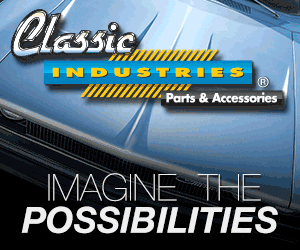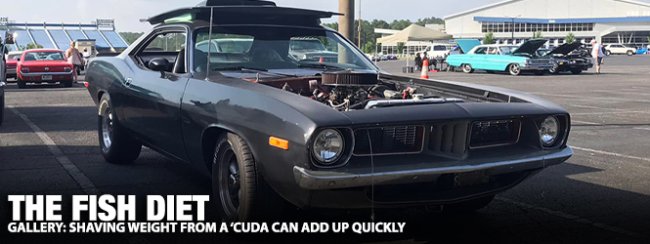
We’ve had this ’73 Plymouth ‘Cuda for three years now and have continually modified the car towards our vision of a rowdy street/strip car that could be driven cross country and beaten on at the track. While it’s probably not top of its class for either of those categories, the car is just a blast to drive and we have a lot of fun with it.
Our ‘Cuda is in fact an actual ‘Cuda; a 1973 340 automatic car with its fender tag still intact. And before some of you more “purist” readers get too upset, the numbers matching block and transmission are sitting in the garage, and the original Rallye dash and wiring harness were removed and wrapped up for safe keeping.

What lives under the hood now is a 408 stroker small block turning out a respectable 560-horsepower and 535 ft ft-lbs of torque on 93 octane pump gas when dyno tested at Tommy’s Auto & Machine shop in Springfield, TN. With a fairly mild 10:2:1 static compression, this motor was built for cruising and racing all over the country.
Backing the small block is a TCI Street Fighter 727 transmission fitted with a reverse manual valve body, and using all of the best Alto Red Eagle clutches and Kolene steels. [We’re soon to be transferring the Gear Vendors under/overdrive previously ran on MCM’s Brazen Charger before going with a SST Tremec TKX –Ed.]
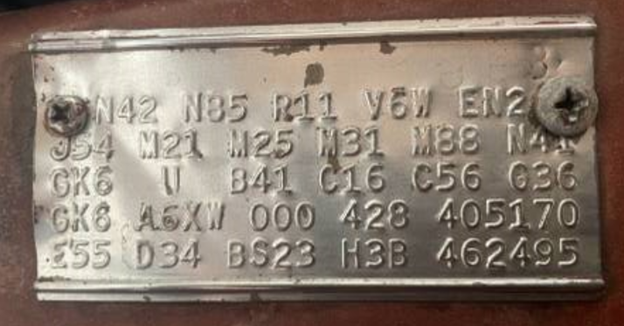
We were happy with the power produced by our new engine, but some performance was sacrificed to keep the engine on the milder side. We wanted to see what we could do to shave some weight out of the car to make up for some of that power we may have left on the table.
And if the old racer’s adage: “every 100 pounds you can pull out of a car is worth .1 seconds in the quarter mile” still holds true, we wanted to find weight savings that would not affect the street manners of the ‘Cuda. After quite a bit of work, the diet resulted in nearly 200-pounds being removed from the nose of the car! …so how did we accomplish this?
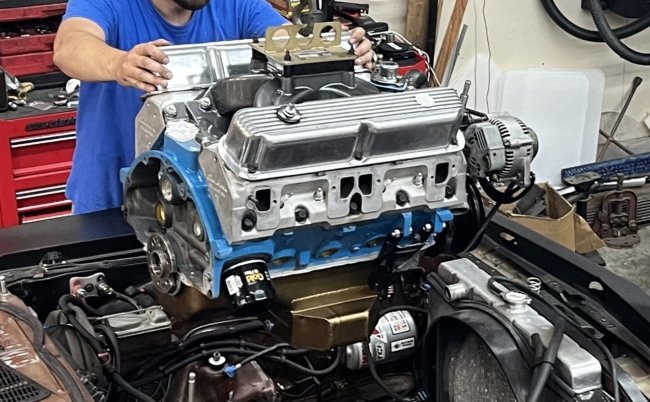
Cylinder Heads
Besides the many other advantages of Aluminum heads our Edelbrock Performer RPM heads weighed in at 35lbs a piece as compared to the factory 55lbs cast heads resulting in a total weight savings of 40lbs!
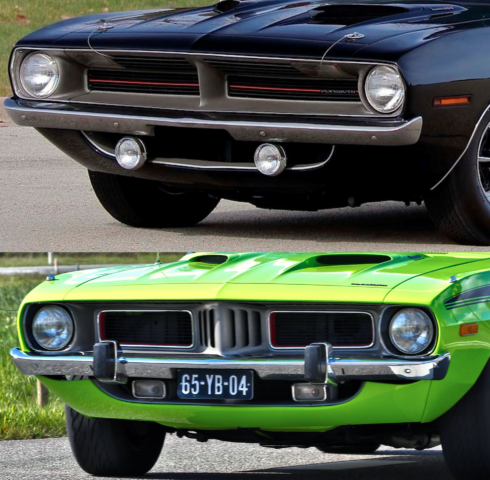
Front Bumper / Brackets
Besides being a major styling improvement (in our opinion) for ’72-’74 ‘Cudas, replacing the front bumper and brackets with 1970 gear resulted in a savings of 26.4lbs. (55.6 lbs vs. 29.2lbs)
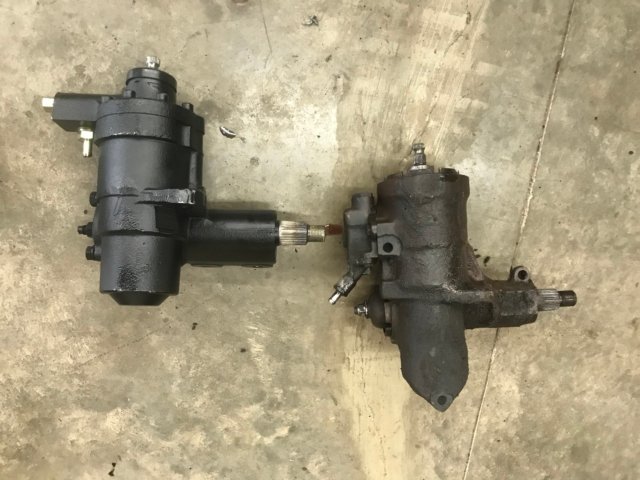
Power Steering Gearbox
Our gearbox needed a rebuild so we went with a Napa Replacement which netted us another 2 lbs (36.8 lbs vs. 34.8 lbs). A Borgeson unit could save you even more weight (and provide a quicker steering ratio) here but that wasn’t in the budget!
Battery (Above left)
The battery in our car weighs 40lbs and was relocated to the trunk. Although it’s not weight completely removed from the car it is out of the nose, which is where we were focusing our diet. The battery tray, brackets and hardware totaled another 2.8 lbs. We also used this opportunity to clean up some wiring and relocated our MSD box to where the battery used to live.
Alternator (Above center)
When we purchased the ‘Cuda it already had the AR Engineering Denso 60 amp small block kit installed which utilizes a smaller alternator typically found on late 80’s/early 90’s Toyota trucks and SUVs. It’s a slick setup and weighs 5.8 lbs versus the factory 7lbs alternator. If you can live with 60 amps it saves you another 1.2 lbs.
Starter (Above right)
We run a late model mini started found on most Mopar V8s throughout the 90s. It’s much smaller, works great and come in and out easy without having to loosen a header so it’s a total win in our opinion. The added bonus that it weighs 8.6 lbs versus the original large 15.4 lb starter is just the icing on the cake. 6.8 lbs savings plus all of those other conveniences.
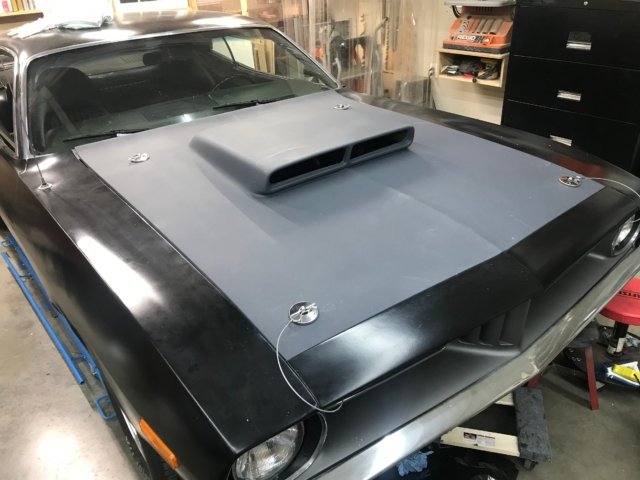
Hood
A while back, we picked up a fiberglass Six-Pack scooped hood off of Facebook Marketplace. Weighing in at 32.4lbs., it handedly beat out the factory 67.6lbs steel hood (35.2 lb savings). Since the hood was full pin on there was no need for hinges, springs and hardware netting us another 13lbs.
Radiator (Above left)
Our original radiator was a little beat up so we were going to replace it regardless. Our new ECP brand aluminum 26” radiator weighed in at 16.4lbs compared the originals 23lbs saving another 6.6lbs.
Cooling Fan (Above right)
For another 5.8 lbs we opted for a lightweight Flex-a-Lite fan which weighed 1.2lbs as opposed to the factory steel fan which weighed 7lbs. This fan works great when positioned in the factory shroud and is easy on your fingers if you’re clumsy in the engine bay.
K-member and Suspension
We opted to replace our stock K-member with the QA1 Tubular K-member for several reasons and are very happy with the choice. Besides weight savings, it opens a ton of room up under the car making it easier to work on things and allowing for more oil pan options. It is also stronger than the factory K-member. Some claim the tubular K-member isn’t suitable for the street, but we’ve had zero issues after roughly 5,000 miles, nor have any of folks we’ve talked to running them on wheel-standing Mopars! We completed our K-member with QA1 lower control arms, QA1 adjustable strut bars and SPC adjustable upper control arms. These changes resulted in a savings of 9.4lbs (75.6lbs vs. 66.2lbs).
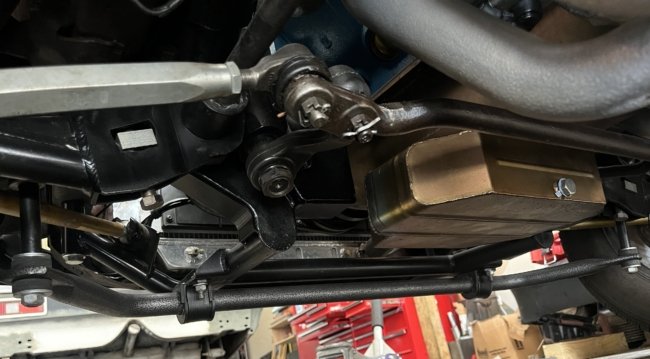
Front Sway Bar
Due to how we use the car we wanted to keep a front sway bar. We did a lot of searching but never found anything substantially lighter. Our new Hellwig brand sway bar is beefy and weights in a 11.6 lbs vs the factory 11.8 lbs for a savings of .2 lbs. For serious drag racers you could remove the bar altogether for a nice 10-plus-pound savings.

Power to Manual Brake Conversion
Our car was a factory power disc brake car. Power brake systems just have more “stuff”…most of the time, more “stuff” weighs more than less “stuff.” We found many positive reviews for the Dr. Diff manual brake kit with the 15/16” diameter bore max line pressure master cylinder so we went for it. Turns out the “stuff” weighed 18lbs and 3.6lbs respectively, saving us another 14.4lbs.
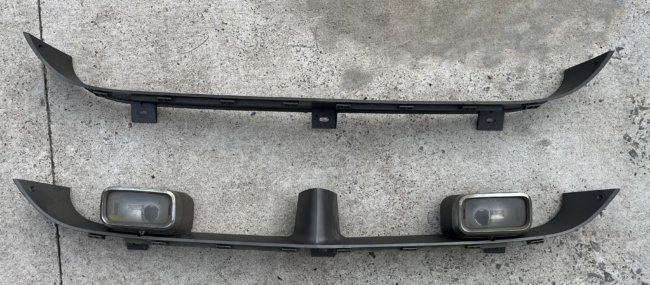
Lower Grille
One other mall tweak we made to the car was to replace the lower grille with a 1970 model. The 1973 lower grille had the turn signals/fog lamps integrated into them. Removing this grille and replacing with the wide open 1970 model allowed more airflow to the radiator and looked cleaner in our opinion. We went with headlights with integrated amber halos for the signals/fog lamps. We chose the United Pacific 31284 ULTRALIT 7” Crystal Glass Headlight w/Amber LED Halo Ring and have been very impressed. Besides looks and more airflow we saved 1lbs here as well!
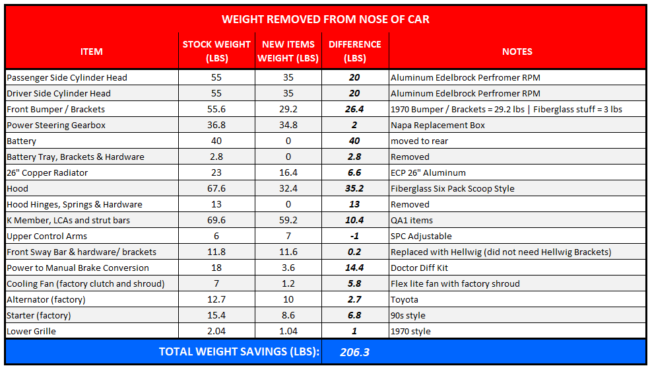
Above: In our opinion we have not sacrificed anything that would make the ‘Cuda be a true street car. Some of these items may not be for everyone but we like it. For wrenching in the engine bay, we love the lift off hood; but for checking the oil or making a quick tweak on the side of the road, it’s not always the greatest thing. Hopefully, this diet plan helps some of you other racers shave some quarter mile times! Or if you’re just trying to justify some cool new parts tell folks you’re doing it to be green less mass to move also means better fuel mileage, right?



